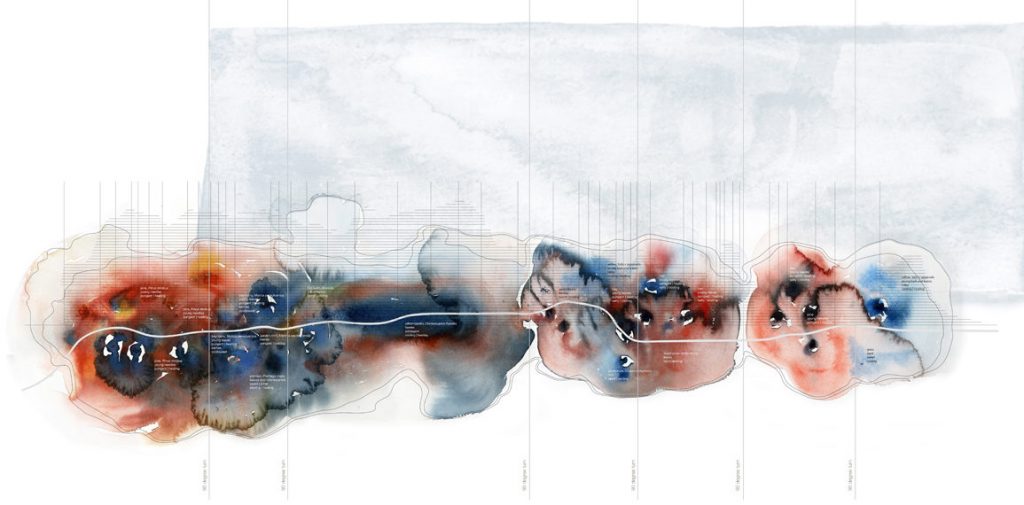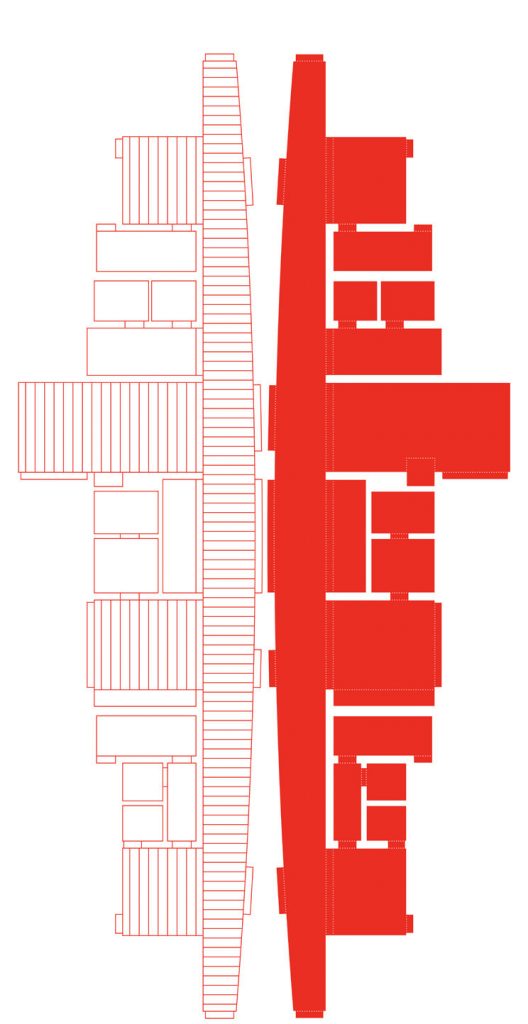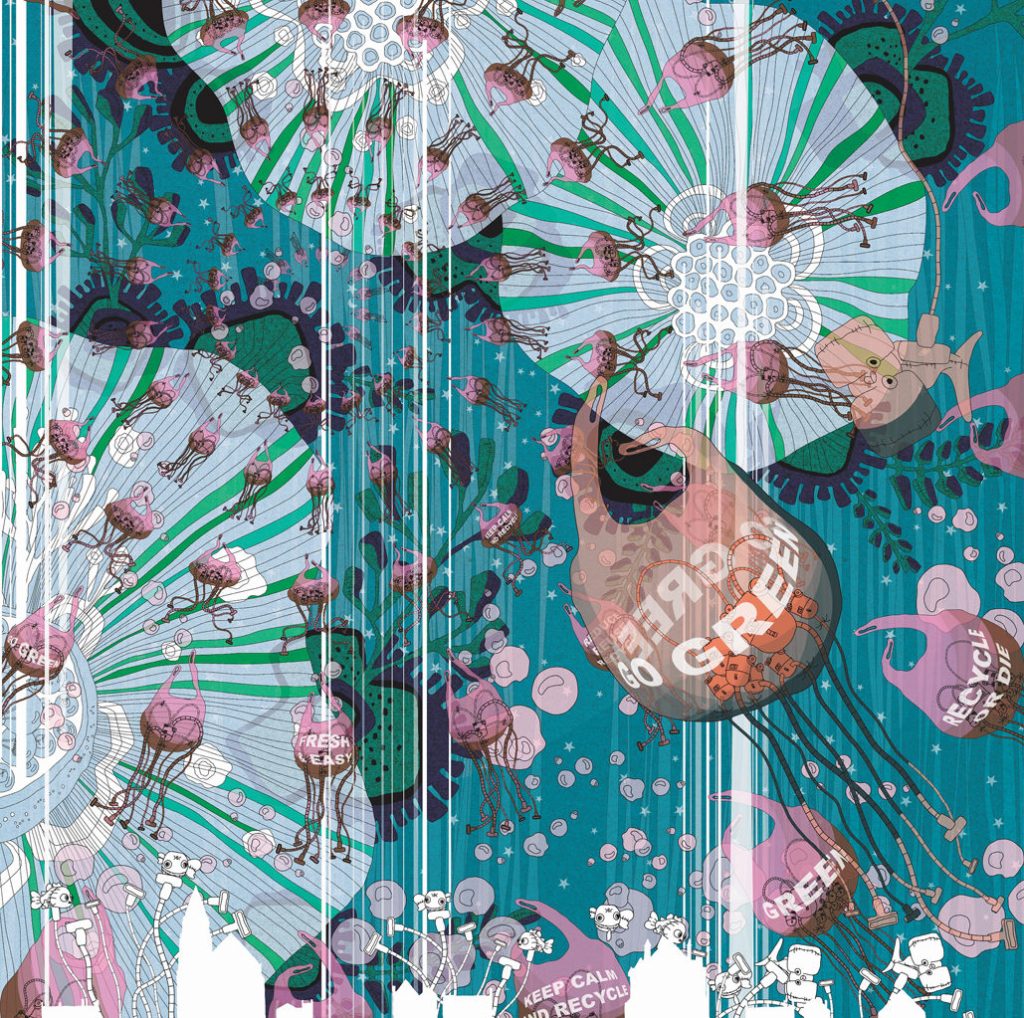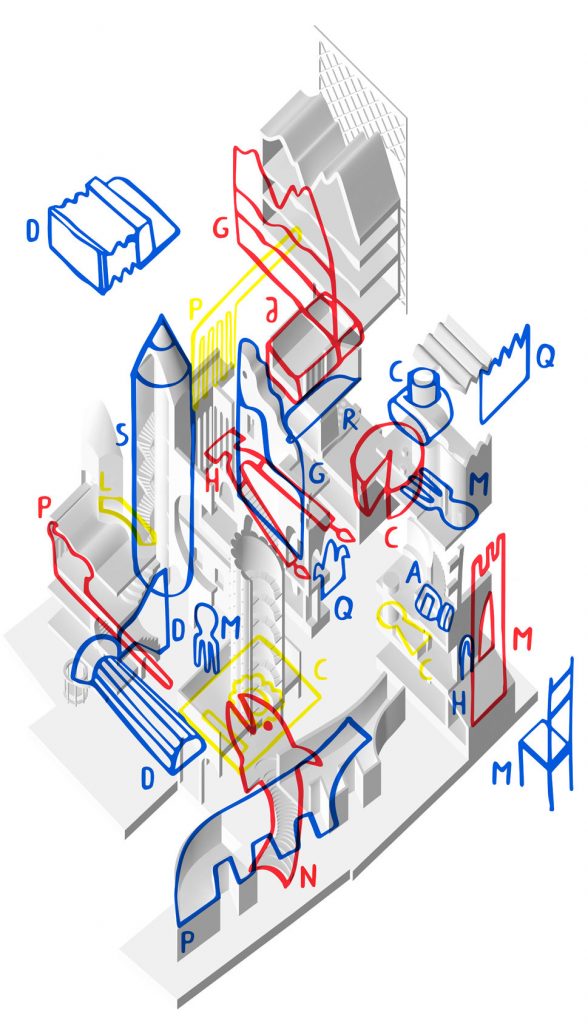An exhibition of architectural drawings illustrates the expanding purview of today’s architects, says co-curator Amy Kulper
In a cultural moment that has witnessed an exponential proliferation of digital tools, why foreground the operations and agency of the architectural drawing? I and my co-curators Jeremy Ficca (Carnegie Mellon University) and Grace La (Harvard GSD) have done just that in an exhibition at the Roca London Gallery, ‘Drawing Attention: The Digital Culture of Contemporary Architectural Drawing’. If contemporary technologies allow the architect to visualise the complex data incorporated in a building (BIM), or visualise the anticipated completion of a project (augmented reality), or process a volume of data sets that was previously unimaginable (machine learning), then what light can the single drawing shed on the pervasive impact of digital culture on architectural practice?

Olfactory Clouds by Jana van der Goot (2010, above), ‘Museum is More, Section’ by Jimenez Lai (2014, top)
In ‘Drawing Attention’, a collection of over 75 architectural drawings gives an overview of the techniques and interests of global professional and academic practices, offering a lens through which to examine how digital culture has revolutionised design thinking. Like the tip of an iceberg, the contemporary architectural drawing is the manifestation of something larger beneath – a complex amalgam of software, techniques and processes in which the visible surface masks a procedural depth beneath an aesthetically pleasing veneer. Architectural historian David Leatherbarrow observes that “whether executed manually or digitally, in two dimensions or three, architectural drawings reveal aspects of the built world that normally escape attention”. What trends, inclinations and future trajectories might these drawings predict for architecture?

‘Hall House’ (2019), by Liam O’Brien of WOJR
Liam O’Brien of WOJR contributed a drawing from his 2019 Hall House project. The drawing is both recognisable and unknown. Part plan, part icon, part organisational diagram, it explores the prosaic subject of proportioned chambers aligning themselves along a curving hallway, filleting and splaying them so that they simultaneously depict above (the reflected ceiling plan) and below the (top-down spatial organisation). Defying the conventions of architectural plan-making through distillation, WOJR’s drawing operates in a digital culture that eschews the noise of information and overabundance of data in favour of the clarity of abstraction.

‘Territorial Printing with Ocean Currents’ (2019), by Maj Plemenitas
A visitor to the exhibition would be hard-pressed to tell whether Maj Plemenitas’ drawing, ‘Territorial Printing with Ocean Currents’ (2019), is a microscopic or macroscopic image. This scalar ambiguity is indigenous to the digital environments in which many contemporary architects operate, and he leverages it in the service of instigating sedimentation at a territorial scale. Utilising software of his own design, Plemenitas works with ocean currents to control the sedimentation process, facilitating the autonomous growth of new island formations. The drawing appears to simultaneously zoom into the hidden energy that is the source of natural erosion and sedimentation processes, while zooming out to implicate the scale of the territory this printing process could effect.

‘Ocean Cleaning’ (2019) by CJ Lim
The subject of CJ Lim’s 2019 drawing ‘Ocean Cleaning’ is the eight million tonnes of plastic currently polluting the world’s oceans. Rays of light piercing the surface of the ocean illuminate scores of billowing plastic grocery bags, wafting around like oversized jellyfish, ironically labeled ‘green’ and ‘recycle’. Lim’s description of the drawing concedes that “the persuasive child-like drawing, embedded with wit rather than statistical abstraction of scientific data, is more likely to capture the public’s awareness and deliver change”. Ghostly silhouettes of buildings at the bottom of the image serve as a cautionary tale for our neglect of this global problem.

‘Association Mapping’ by Johanna Just
Each of these architects utilises digital tools to draw attention to salient cultural issues – the excess of information, the possibility of terraforming new territories with ocean currents, and the global climate crisis. In revealing aspects of the built world that might normally escape our notice, this exhibition is drawing attention to the fact that the purview of the contemporary architect extends well beyond buildings.
